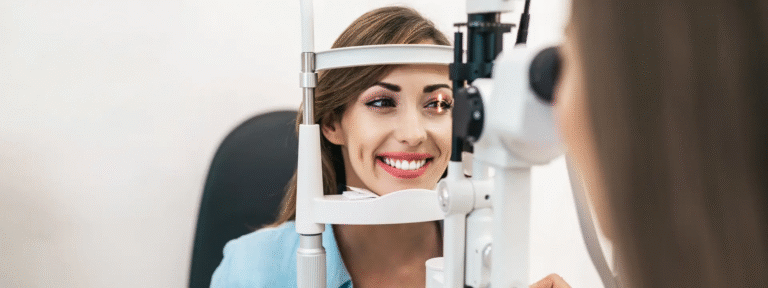Vaginal atrophy, also known as genitourinary syndrome of menopause (GSM), is a common and often distressing condition affecting many women during and after menopause. It results from the natural decline in estrogen levels, leading to thinning, drying, and inflammation of the vaginal walls. These changes can cause discomfort, pain, and urinary issues, significantly impacting quality of life.
While traditional treatments include hormonal therapies, many women seek vaginal rejuvenation therapies as safe, effective, and non-hormonal alternatives. This article explores how vaginal rejuvenation addresses vaginal atrophy in menopausal patients, restoring function, comfort, and sexual health.
🔬 What Is Vaginal Atrophy?
Vaginal atrophy is characterized by:
- Thinning of the vaginal mucosa
- Decreased elasticity and lubrication
- Increased vaginal pH, leading to a higher risk of infections
- Fragile tissues prone to irritation and micro-tears
Common Symptoms Include:
- Vaginal dryness and burning
- Painful intercourse (dyspareunia)
- Itching and irritation
- Urinary frequency or urgency
- Recurrent urinary tract infections (UTIs)
💡 Why Vaginal Rejuvenation for Atrophy?
Menopausal women often hesitate or are contraindicated to use hormone replacement therapy (HRT) due to personal preference or medical conditions (e.g., history of breast cancer). Vaginal rejuvenation offers a non-hormonal option that stimulates the body’s own regenerative mechanisms to rebuild healthy tissue.
🛠️ Types of Vaginal Rejuvenation Therapies for Atrophy
1. Laser Therapy (Fractional CO₂ or Erbium Lasers)
- Uses controlled laser energy to create microscopic columns of injury in the vaginal lining.
- Stimulates collagen remodeling, increases blood flow, and thickens the mucosa.
- Promotes natural lubrication and improves elasticity.
- Typical treatment involves 2-3 sessions spaced weeks apart.
2. Radiofrequency (RF) Therapy
- Delivers heat energy to deeper vaginal tissues, promoting collagen and elastin synthesis.
- Enhances tissue tightening and vascularization.
- Usually involves multiple sessions for optimal results.
- Non-invasive and pain-free.
3. Platelet-Rich Plasma (PRP) Therapy
- Involves injecting the patient’s own platelet-rich plasma into the vaginal tissue.
- PRP contains growth factors that accelerate tissue regeneration and healing.
- May be combined with laser or RF treatments for enhanced effects.
🩺 How Vaginal Rejuvenation Treats Vaginal Atrophy
Collagen Stimulation and Tissue Thickening
- Both laser and RF therapies promote the production of new collagen fibers.
- Collagen rebuilds the structural framework of the vaginal walls, increasing thickness and resilience.
Increased Blood Flow and Lubrication
- Treatments improve microcirculation in vaginal tissues.
- Enhanced blood supply restores natural lubrication, reducing dryness and irritation.
pH Restoration and Infection Resistance
- Healthier vaginal tissue and flora help lower vaginal pH.
- This reduces susceptibility to infections such as bacterial vaginosis and UTIs.
Symptom Relief and Improved Sexual Function
- By restoring tissue health and moisture, pain during intercourse is alleviated.
- Many patients report improved sexual sensation and increased comfort.
📅 Typical Treatment Course and Recovery
- Treatments are usually performed in-office with minimal discomfort.
- Sessions last 15-30 minutes, often requiring 2-4 treatments spaced 4-6 weeks apart.
- No significant downtime; patients can resume normal activities immediately.
- Full benefits typically appear 1-3 months after the final session.
⚠️ Safety and Considerations
- Vaginal rejuvenation therapies are generally safe with a low risk of side effects.
- Mild side effects may include temporary redness, swelling, or discharge.
- Not suitable for active vaginal infections or untreated cancers.
- Consultation with a healthcare provider is essential to determine candidacy.
✅ Benefits Over Hormonal Therapy
| Aspect | Vaginal Rejuvenation | Hormonal Therapy (HRT) |
|---|---|---|
| Non-hormonal | Yes | No |
| Suitability for cancer survivors | Yes | Usually contraindicated |
| Side effects | Minimal, localized | Systemic risks (thrombosis, cancer) |
| Treatment frequency | Periodic maintenance | Daily or regular dosing |
| Onset of effect | Weeks to months | Weeks |
🧑⚕️ Patient Selection and Follow-up
Ideal candidates for vaginal rejuvenation include:
- Women with mild to moderate vaginal atrophy symptoms
- Those who cannot or prefer not to use hormones
- Patients seeking minimally invasive treatment with quick recovery
Follow-up appointments help monitor symptom improvement and decide on maintenance schedules.
🔍 Final Thoughts
Vaginal rejuvenation represents a promising non-hormonal therapy for menopausal vaginal atrophy, combining scientific innovation with patient-centered care. By restoring tissue health and function, these therapies enhance comfort, sexual wellness, and overall quality of life—empowering women to age gracefully and confidently.




